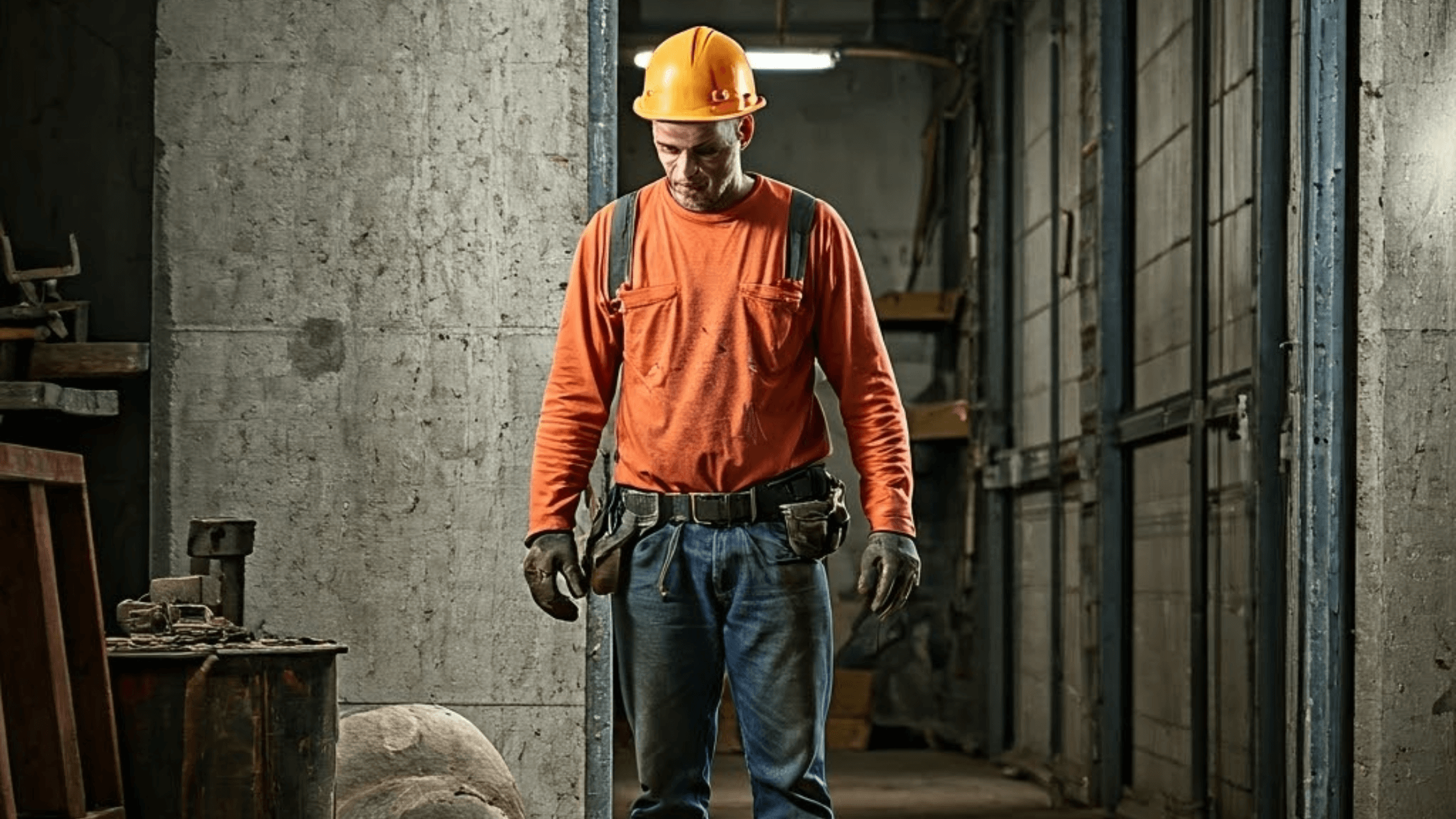Construction work is often dangerous and performed in hazardous conditions that require a worker’s constant attention. Yet, the industry tops the charts with some of the highest rates of substance abuse of any industry. Annually, hundreds of construction workers experience overdoses, while thousands more struggle with addiction daily. Local and federal officials are addressing the problem, but contractors and co-workers can do their part through acknowledgment and support.
Quick look
- Substance abuse rates are higher in the construction industry due to work-related physical disorders, stress and mental health issues, and the industry’s “macho” culture
- Data from the Substance Abuse and Mental Health Administration (SAMHA) suggests that approximately 15% of construction workers struggle with substance abuse
- Alcohol abuse rates in the construction industry are nearly double that of the general population
- Construction workers have the highest mortality rates for drug overdose deaths and prescription opioid-related overdose deaths of any industry
- To help combat addiction, employers must implement wellness programs and offer support resources
Culture and work conditions contribute to addiction

Many factors contribute to construction workers having a significantly higher rate of substance abuse than the general public. Some of these include:
- Cultural factors bound to their work
- Common work-related physical maladies
- Work-born stress and associated mental health problems
- The stiff-upper-lip mindset (also known as the macho culture)
A macho attitude is not specific to any ethnic group in construction but rather part of the culture. Construction workers like to view themselves as tough because they are, and perhaps there’s nothing wrong with this can-do view in and of itself. Maybe it is essential.
However, a go-it-alone approach among these workers can lead to problems like drug and alcohol abuse.
People with mental health issues tend to self-medicate with illegal drugs or excessive drinking rather than seek help through counseling—it’s an ‘easier’ way out that doesn’t involve being vulnerable. The national opioid crisis resulting from the overprescription of opioids has led to a two-fold addiction of workers to pills and heroin (which some opioid users progress to in their addictions or use to complement it).
The figures on addiction in construction are staggering. Maybe it shouldn’t be surprising, given the stress of working in the industry. Still, more needs to be done to help workers and contractors.
Scope of the substance abuse problem

Working construction is stressful, in part, due to the physical toll it takes on the body, but also the danger of the tasks, the noise and noxious fumes, the pressure of meeting deadlines, the often-seasonal nature of the work (which leaves many out of employment and scratching for a living), and other factors. These stresses may be at least partly responsible for the higher prevalence of substance use in the sector, which is about double the national average.
Construction workers, most of whom are blue-collar workers, are twice as likely to abuse drugs as the national average for all adult workers. While 8.6% of the general worker population struggles with substance abuse, at least 15% of construction workers do, according to SAMHA’s National Survey on Drug Use.
Here are more stats to hammer home the scope of the problem. Among other industries in the U.S., construction ranks:
- 3rd in illicit drug use — 12.95%
- 2nd in heavy drinking — 16.02%
- 2nd in substance abuse disorder — 16.07%
- 1st in marijuana use — 60.33%
- 1st in heroin use — 4.42%
- 1st in pain reliever/opioid abuse — 22.63%
Substance use in the industry has reached a level that some local officials have decided to address it.
In late 2023, New York City officials began to tour construction sites across the city to educate workers on the dangers of opioid abuse and other drug addictions and the particular risks they pose in the construction field. This effort began after statistics revealed more than 250 workers died of overdoses each year in New York City.
However, a worker doesn’t need to be in a big city for this affliction to hurt them. It’s a global problem in the construction industry.
Alcohol abuse is rampant

Consuming alcohol in the male-dominated industry is part of the cultural fabric—it’s not uncommon for workers to grab a beer after a long day. Admittedly, there are a lot of hard drinkers in this sector, with 12% having an alcohol use disorder compared to 7.5% of adults nationally, according to the SAMHA study.
According to the report, 14.3% of construction workers reported being diagnosed with a substance use disorder within the past year—1.5 times the national average. Their reported rates of overdrinking are similar, with 12% saying they have an alcohol use disorder compared to 7.5% of adults nationally.
The male-dominated construction industry’s macho culture can lead some to the work-hard-play-hard mentality, which too often naturally comes with over-drink and drug use. According to the SAMHA report, 16.5% of construction workers reported heavy alcohol consumption within the past month—that’s almost twice the average of workers surveyed.
But here’s where things get tricky: most people aren’t honest about the extent of the problem, especially when it comes to highly personal matters like substance use. While 11.6% of construction workers reported illegal drug use within the past month and 2.3% reported having a marijuana use disorder, rates are likely higher.
Opioid addiction is pervasive
About 1.3% of construction workers have an opioid use disorder, which is nearly twice the national average for adults. Opioid addictions often result from a patient’s dependence on a drug first prescribed by a doctor for a physical disorder, such as a severe work-related injury. Because opioids are highly addictive, it’s easy for people who were never addicts to become addicted.
The Centers for Disease Control and Prevention says construction has the highest mortality rates for drug overdose deaths and prescription opioid overdose deaths of any industry. The CDC report on overdose deaths by occupation found 162 overdose deaths per 100,000 construction workers in 2020.
With musculoskeletal problems and other physical injuries common in the industry, overprescription of painkillers is a serious issue exacerbating the problem.
“The industry mirrors demographics vulnerable to addiction: A majority of construction workers are men, who are more likely than women to die of overdoses overall,” the CDC report stated. “Hispanic people are overrepresented in the construction industry and have a rising overdose mortality rate overall.”
Nearly three-quarters of injured construction workers were prescribed a narcotic painkiller in 2016, according to American Addiction Centers. “Opioids account for 20% of the total spending on prescription drugs in the construction industry, a higher amount than any other industry, according to a report by CNA Financial,” AAC says on its website.
Construction overdose deaths top all industries
According to the Centers for Disease Control and Prevention, construction workers have the highest mortality rates for drug overdose deaths and prescription opioid-related overdose deaths—they are seven times more likely to die of an opioid overdose than workers in other industries.
Construction workers account for a quarter of fatal opioid overdoses and have the highest proportion of heroin-related overdose deaths of any industry.
A study on drug use by New York University found that compared to all other professions, construction workers are most likely to use heroin or cocaine. The industry had the highest rate of abusing prescription opioids (3.4% versus 2%) and the highest rate of cocaine use (1.8% versus 0.8%).
Marijuana use is very high

Construction workers also have the second highest rate of marijuana use among all types of workers, just behind service jobs workers—12.3% versus 12.4%, compared with 7.5% in non-construction occupations.
The implications of drug-impaired or drunk construction workers—even boots-on-ground laborers not working with heavy machinery—are troubling. And the fact that it happens daily on construction sites across the country is far more disturbing.
While there is no statistical data showing how many job site accidents or incidents are due to intoxicated workers, it’s safe to assume that several are, to some degree.
Spotting signs of substance abuse
There’s no legal definition of what impairment or being under the influence of marijuana is, and people hide signs of impairment if they are at work. But signs of drug or alcohol impairment while on the job can include:
- Changes in speech and demeanor
- Impaired agility and coordination
- Irrational behavior
- Carelessness when operating equipment or machinery
- Disregarding the safety of others
- Having an accident resulting in heavy damage to equipment or property
Some signs of impairment may not mean the person is impaired but rather that they have a physical ailment, and if so, the law protects them. Because of this and due to the possibility of a wrongful punitive action occurring because of a misjudgment that a worker is impaired, it’s best to set up parameters by which employees know performance expectations and through which they know that certain appearances and behaviors might raise alarm bells regarding their possible on-site impairment.
Such parameters and indicators that couple make employees subject to extra substance abuse scrutiny (like an on-the-spot drug test) by their employer might include:
- Seeming impaired at work, such as smelling like alcohol or drugs, being glassy-eyed, walking unsteadily, having slurred speech, or lacking coordination
- Unsafe work resulting in an accident
- Failing a drug test
Having written expectations and consequences is a necessary part of keeping employees safe. Employers must encourage wellness among workers in every respect—physical, emotional, and psychological.
Employers must implement wellness programs that offer workers a safe, nonjudgmental space to express their feelings and receive help and support when needed without fear of losing their jobs.
Workers should be encouraged to look out for their co-workers who may need support with addiction, to know the possible signs, and how to offer them help when needed. Employers should also include addiction treatment in the company’s health care benefits when possible.
Safety is the priority
From start to finish, trying to do the right thing for workers who are struggling with addiction is about safety—of the worker, co-workers, and the company as a whole.
A healthy worker is a safer worker, and addicted workers are neither healthy nor safe.
Managers and employers should remember to be compassionate and practice empathy when dealing with construction workers compromising safety on a worksite. The person being reprimanded is a fellow worker and a human being, likely hurting physically and emotionally. They need your help and support.


